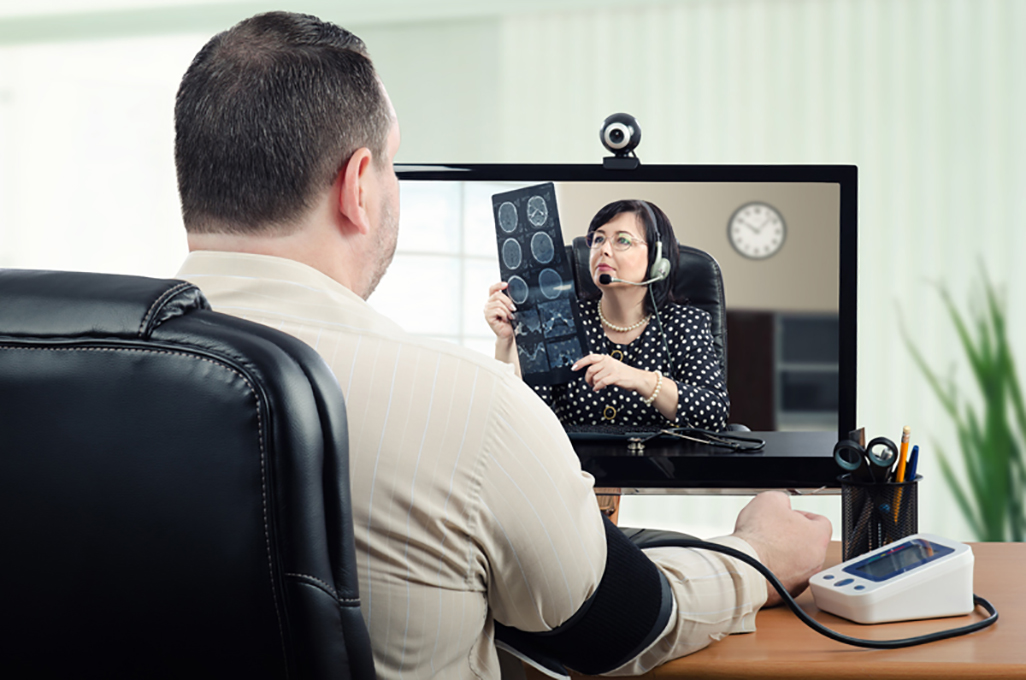In mid-April, Claudia Hodges went to Augusta University Health’s emergency department with symptoms that included loss of taste and smell, uncontrolled fever and extreme fatigue.
She was diagnosed with COVID-19 and pneumonia and nearly ended up in intensive care.
“It was one of the scariest things I’ve ever been through,” she said.
But after several rounds of infusions and high-flow oxygen, Hodges had improved enough to try a new type of monitored care – Virtual Care at Home.
“Virtual Care at Home is an innovative care model used by AU Health to provide hospital-level care in a patient’s home as an alternative for providing care in the hospital,” said Dr. Thad Wilkins, one of the physicians instrumental in developing the program at AU. “This program is a new and exciting program for AU Health. It allows us to treat patients at home while delivering safe care with high-quality and improved satisfaction. Currently, we are treating patients with a limited number of conditions, including COVID-19, cellulitis, pulmonary embolus, deep venous thrombosis, pneumonia, asthma and COPD. We have plans to expand to other conditions in the coming months.”
Patients are provided with a hub that connects via Bluetooth to smartphones and tablets. The hub sends messages and reminders and serves as the primary means of communicating with medical staff. Patients are also provided additional devices such as scale, glucometer, pulse oximeter, blood pressure monitor, or thermometer as prescribed by the physician. In addition, an AU Health care coordinator is available 24/7 through an on-call button, just as in the hospital. Patients also connect with AU Health providers for telehealth visits. These telehealth visits allow the provider to monitor the vital signs, perform an evaluation and discuss the ongoing care plan with the patient and their family.
“It’s kind of exciting that you can essentially have a nurse call button from your home and be able to have an evaluation done remotely,” said Dr. Phillip Coule, vice president and chief medical officer of AU Health System. “It’s more efficient for the patient as well, particularly for the rural areas of the state where, as long as they have internet available, the ability to get care in their home is an exciting opportunity.”
The remote vital signs are monitored by an AU Health Care Coordinator. The nurse monitors vital signs daily and is the first point of contact if a patient has questions or a problem. The nurses work with the prescribing AU Health providers to identify problems or make timely interventions. Through Virtual Care at Home, patients spend more time recovering at home and less time in the hospital while receiving the same level of medical care.
After eight days in the hospital, Hodges said she had improved enough to continue her treatment at home with this new option. She was happy to try it. Although she was nervous at first because she was still on oxygen, a member of the NavCare staff came to her home, helped her set it up, and answered all of her questions.
“What they do is you have this machine that they give you. It’s how you communicate with any nurse that’s part of the team,” she said. “Once it syncs (with NavCare) and you’re checking your vitals, it goes straight to the nurse, who looks at them and then contacts you if there are any issues.”
Coule said one of the most significant benefits for patients is that while it reduces the amount of time a patient is in the hospital, it also allows them to be more comfortable as they’re healing.
“It should improve the healing process because people get home to their friends and family and their bed sooner than they would otherwise,” he said.



